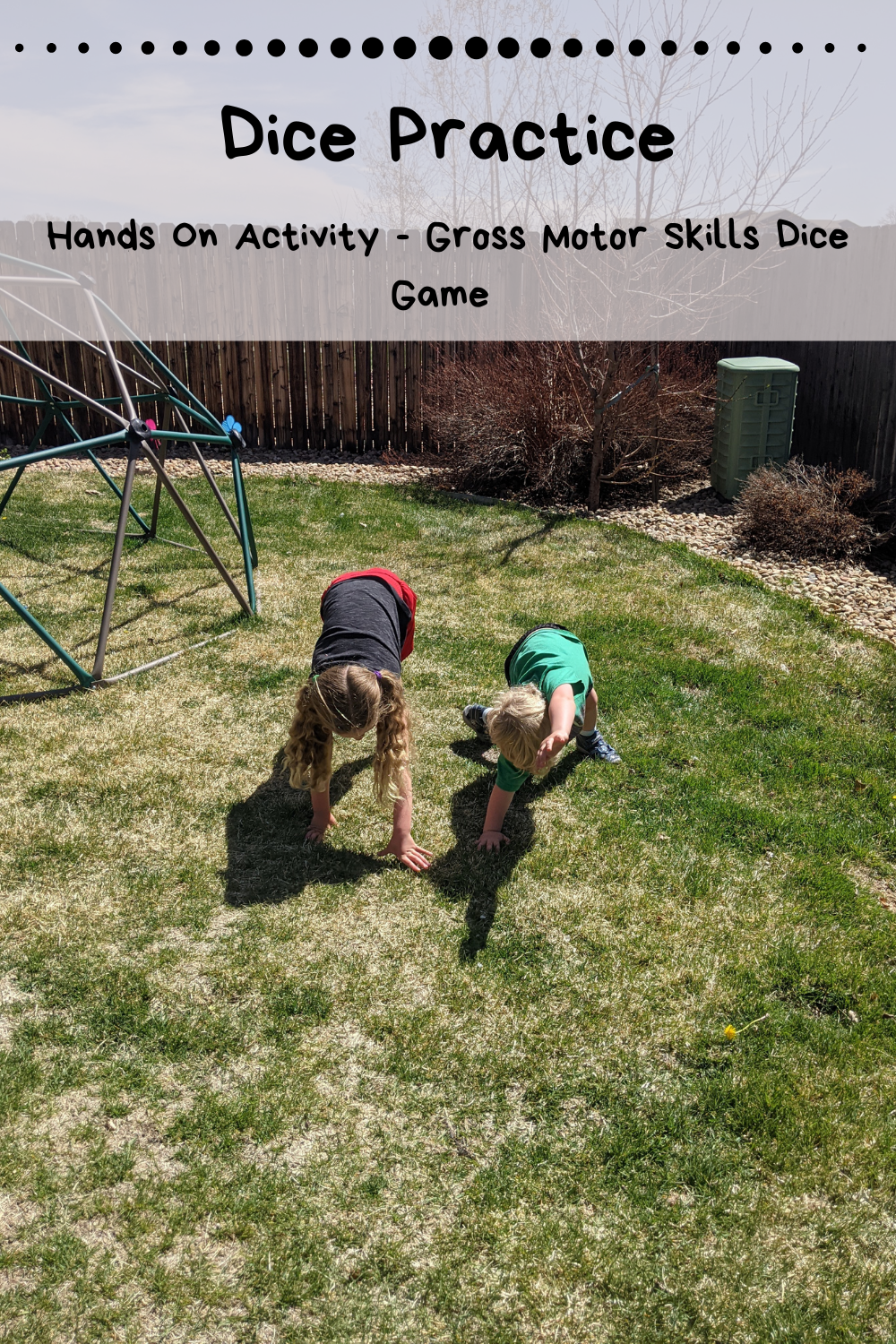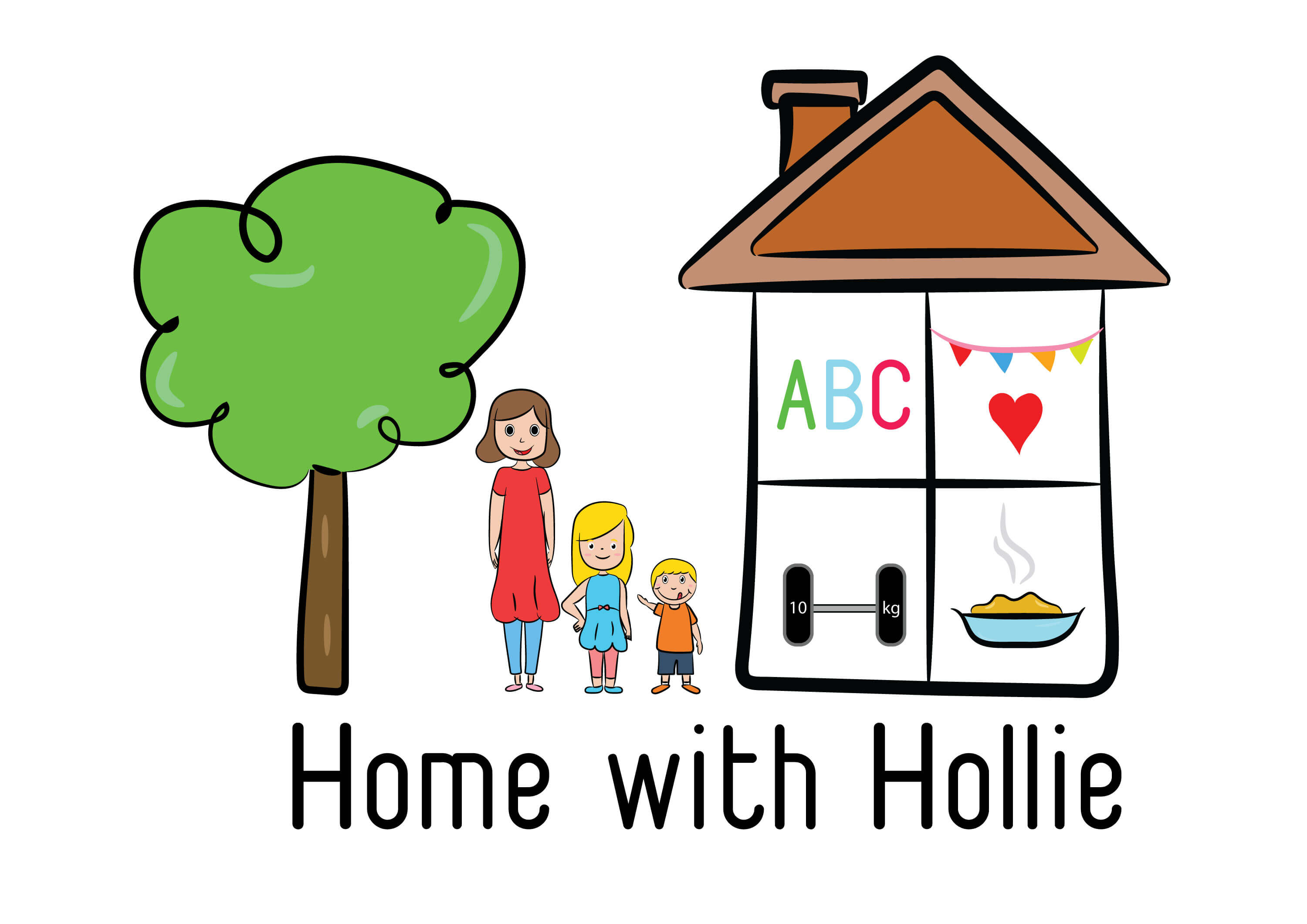
Sharing is caring!
Help your preschooler improve muscle tone and coordination with this easy and engaging gross motor skills dice game.
Before a student is ready for seatwork and fine motor skills development they must pass certain milestones for gross motor development. This is the natural built-in progression of human development. You can help your student with school readiness by playing games. Develop and improve gross motor skills and lay a firm foundation for future school work.

Disclaimer: This blog post contains affiliate links. If you use them, I might be rewarded credit or a commission of the sale. Please note that I only recommend tools that I personally use and love and I always have my readers’ best interest at heart.
Kids can practice simple and fun activities that improve gross motor skills at home. Find a spot in your backyard or even in their living room. If you don’t have a backyard, head to the nearest park for sunshine and play our gross motor skills dice game outside. Be creative and come up with times and locations to work on this important physical development.
Each number on the die will determine the number of repetitions for any chosen activity. You can choose from a variety of powerful skill-building activities and call them out before the die is rolled. Some of these recommended activities are harder than others. Don’t expect perfection when your child is learning. Work on these movements a little each time and encourage the child to do his or her best.
One of the things I’ve noticed in my years of working with preschool kids is that many of these skills have been lost in the age of electronics and distractions. Read more about the importance of gross motor skills for preschoolers.
Gross Motor Skills Activities
Hopping or Jumping improves leg strength, coordination, and balance. Jumping is an up and down movement, hopping is a little more bouncy but basically the same skill. Jumping can be done in place or with forward or backward movement, and these slight changes will affect which muscles are being strengthened and trained to work together.

Clapping is the act of putting to hands together to make noise, and helps kids work on hand-eye coordination, focus, and arm control.
Turning Around or Turning in Circles requires large muscle coordination in sequence, balance, and visual processing. It will also strengthen the core muscles. For variety, you can change up the turning activity by having kids jump as they turn, make tight circles or big circles, swing their arms, or keep arms tight to the body, and do forward turns or backward turns.

Stepping Forward and Stepping Backward increases a child’s muscle coordination, spatial awareness, and that backward movement uses muscles not normally used for walking. If you have access to a sidewalk on a hill, try walking backward uphill and walking backward downhill.
Bear Crawling is when a person arches their backs and gets up on all fours to move in a forward or backward motion, like a bear. gives kids a chance to work on core strength, balance in a horizontal plane, hand/foot coordination.

Crab Walking is flipping over so that the back is horizontal to the ground and moving on all fours forward or backward with the core raised off the ground as much as possible. It will increase core strength and work different muscle groups than bear walking while still helping coordination and balance.

Walking on Toes or Heels works different muscle groups and improves balance and muscle coordination.
Touching Toes helps kids stretch their muscles and gain flexibility and strength. It also improves balance and coordination.

Skipping and Galloping work even more on coordination between large muscle groups and are excellent for brain development for mathematical reasoning. Watch this video to see the difference between skipping and galloping and how to explain it to children.
Fun Dice for Outdoor and Indoor Play
Large dice help build gross motor skills! Any time kids are moving their bodies and large muscle groups, motor skills are in play.
Materials for the Gross Motor Skills Dice Game
- Dice
- Space to move either outside or inside. Find what works for you.
How to Play the Gross Motor Skills Dice Game
- Review with your learner how to read numbers on a dice if needed.
- Ask your learner to roll the dice and identify the number rolled.
- Have your learner perform a gross motor activity the number of times they rolled.
- Repeat steps 2-3 until your learners attention span wanes
- Gross motor activity ideas – jump, hop, clap, turn around, step forward, step backward, bear crawl, crab walk, walk on toes, walk on heels etc
For more gross motor activity ideas get our FREE GROSS MOTOR ACTIVITY CARDS!
Play a different kind of dice game to work on gross motor skills and number recognition.
Related Posts
Circle Time for Preschool
Circle time for preschool is a wonderful way to begin your learning time together! Start…
July 12, 2021Fun Ways to Learn the Alphabet
Have you made any of the letter crafts yet? If you are looking for fun…
June 8, 2021

